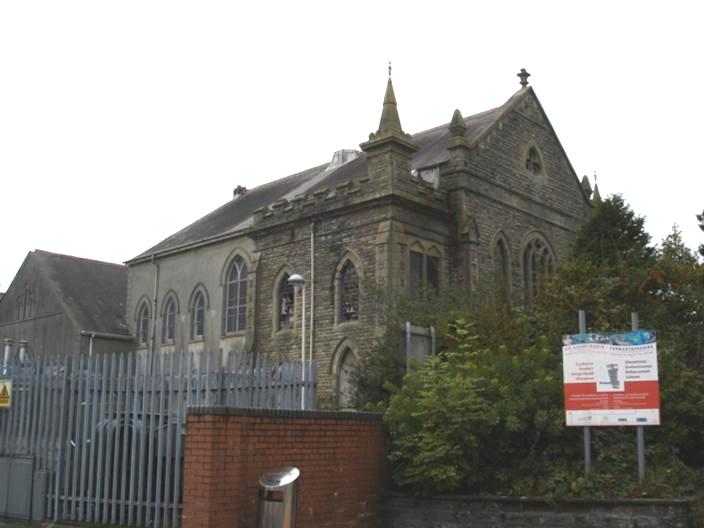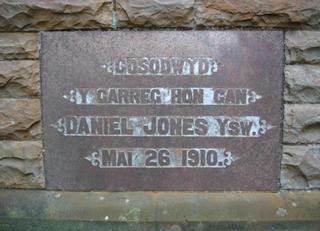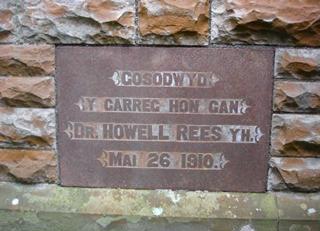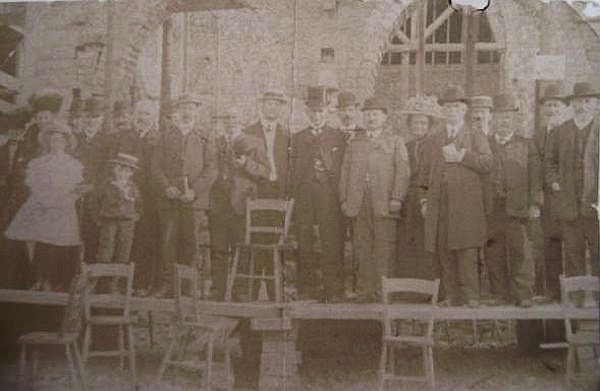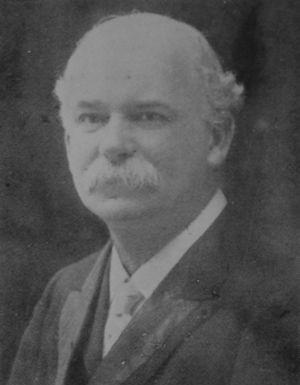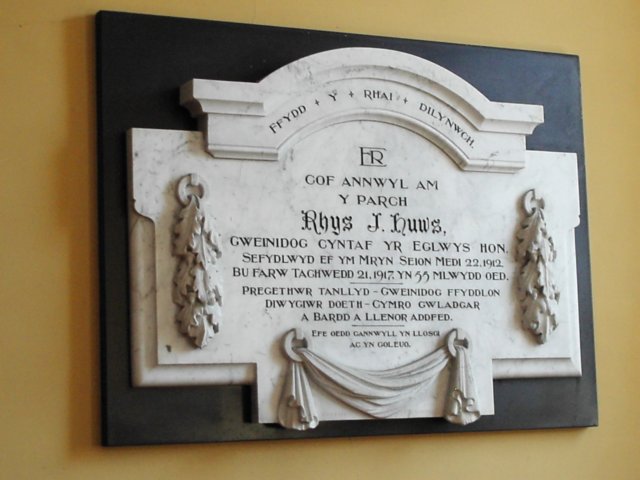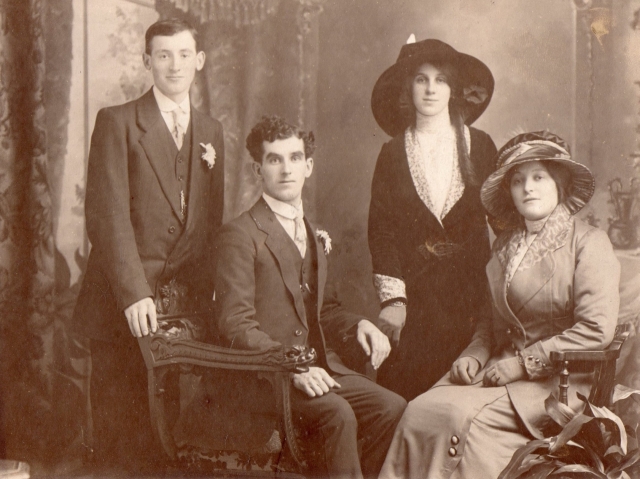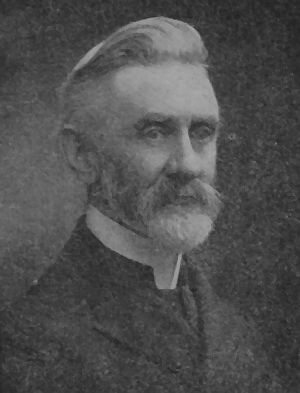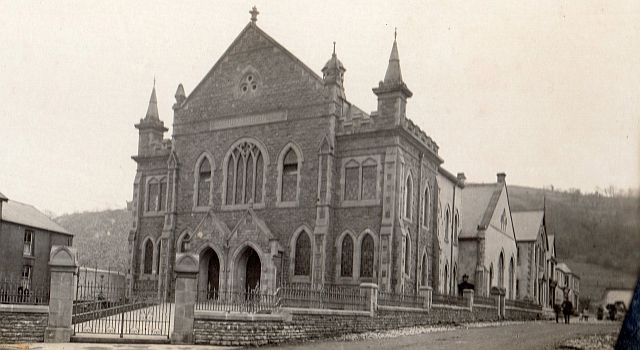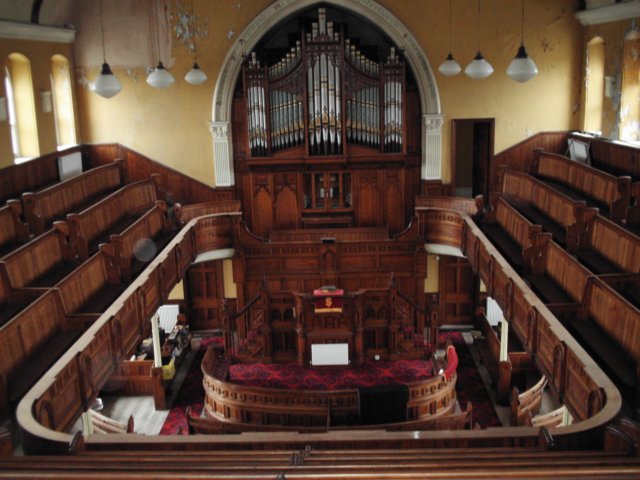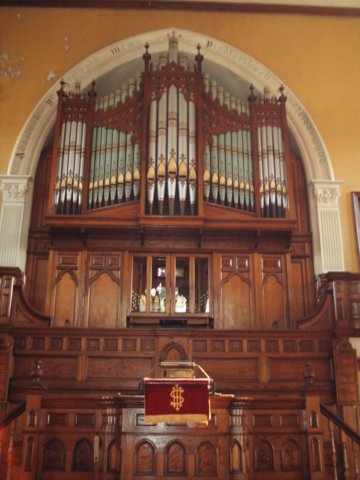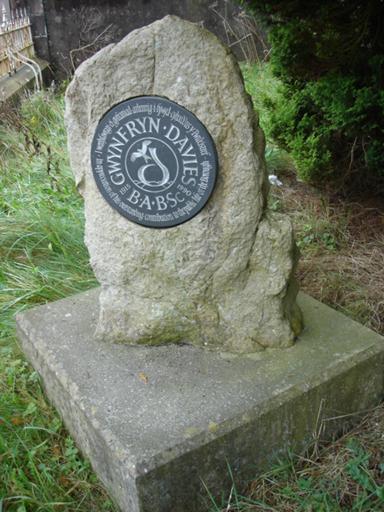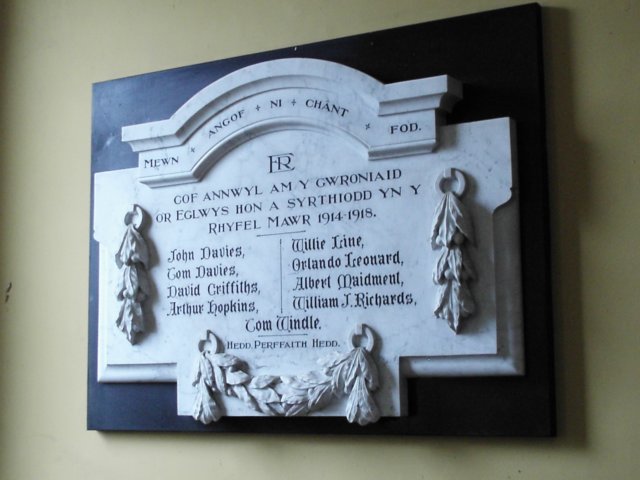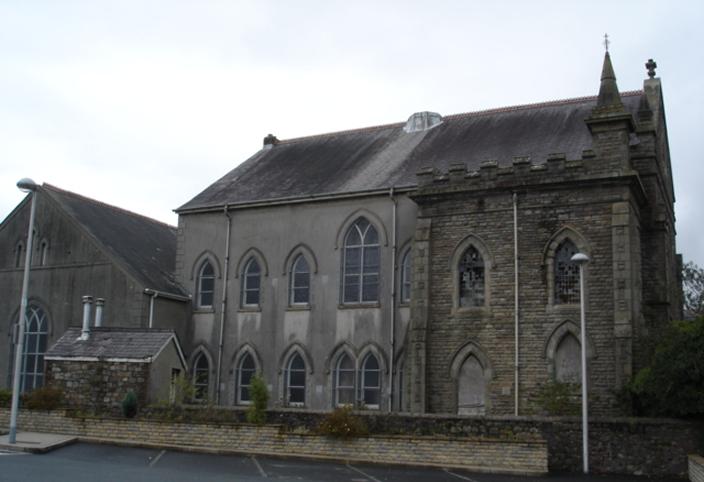Some Captured History of Glanamman and GarnantBryn Seion ChapelBryn Seion Chapel, October 2007 Bryn Seion Congregational Chapel in Glanamman was built on the site of the old British School, on land which was once part of the Brynlloi estate. The old school was purchased from New Bethel Chapel for £150 and demolished in 1909. Ty'n-y-wern (near Glynmoch) and Cwmgrenig (Grenig Rd) schoolrooms also became branches of Bryn Seion, though Mynydd Du schoolroom (Mountain Rd), didn't come under Bryn Seion control in 1915. The land on which Bryn Seion Chapel was to stand was obtained at a cost of £78 12 shillings and 6 pence. The large rectangular building with Gothic facade, was designed by a local architect named Henry Herbert of Ammanford and had the impressive ability of being able to seat 800 people. The building contractor was William Evans of Ammanford who carried out the work at a cost of £4,784 and 10 shillings excluding the organ. In today's terms (i.e. estimated value of the £ in 2007), the cost would equate to approximately £273,000. When the chapel opened, over £3,500 had been collected towards the cost. A more detailed account of the cost of building Bryn Seion Chapel is available on a seperate webpage. Work first started on the large vestry in 1909 and it was designed to accomodate 400 people. While Bryn Seion was being constructed, Glanamman Council School was used for services. The names of the first deacons and other officials at Bryn Seion are available on a seperate webpage. Two memorial stones were placed by Daniel Jones of Glen hurst, Glanamman and Doctor Howell Rees of Cardiff on Thursday the 26th of May 1910. These can be seen at the front facade of the chapel.
Memorial Stones placed by Daniel Jones and Dr. Howell Rees
Bryn Seion on the day that the Memorial Stones were laid Bryn Seion Chapel opened on Sunday the 12th of May 1912 and the first Minister to preach from the pulpit was Josiah Towyn Jones, who had been minister of New Bethel Chapel from 1885 to 1906. The afternoon's preaching was carried out by another minister, J. Edryd Jones. Later, both ministers took another turn in addressing the congregation. Services by other guest ministers took place throughout the week. The Rev. Rhys J. Huws was invited to became Bryn Seion Chapel's first official minister on the evening of Sunday the 2nd of June 1912. He took office on the 22nd of September that year and remained at Bryn Seion until his death on the 21st of November 1917, aged only 55. On Sunday the 14th of January 1923, two marble memorial tablets were unveiled at Bryn Seion Congregational Chapel. One of these was dedicated to the memory of Rev. Rhys J. Huws and was unveiled by Miss Agnes Marian Huws. The dedication on the tablet described him as a fiery preacher and faithful minister, wise revivalist, patriotic Welshman, bard and man of literature. It ends with a tribute which translates as: "He was the burning candle and the light."
Rev. Rhys J. Huws
Memorial to Rev. Rhys J. Huws The January 1st, 1914 edition of the Amman Valley Chronicle, reported that the first wedding at Bryn Seion was between Mr Willie Phillips of Woodland, Glanamman and Miss Maria Davies of Bryngwyn. The Reverend R. J. Huws performed the ceremony in front of a large number of guests and because it was the first wedding held at Bryn Seion, the chapel presented the couple with a bible to mark the occasion.
Will and Maria (seated) Also shown is Rees Davies,
Maria's brother and Blodwen Phillips, Will's sister. The January 15th, 1914 edition of the same newspaper reported on the success of the Children's Classes, which were held on Saturday mornings at Bryn Seion and congratulated Mr Huws on initiating such a "source of learning". Information from the A. V. Chronicle provides us with a glimpse into other aspects of the life of the chapel, such as the half yearly meetings; one of which was held on the 28th February, 1914, when "Pedrog", a well known bard from Liverpool and Rev. J. T. Jacobs of Fishguard, gave "able sermons" to the large congregation. The following day (St. David's Day), Pedrog gave a "truly characteristic lecture" at New Bethel Chapel, Glanamman.
Pedrog Entry to the chapel is through a double porch and a
lobby which has stairs at either end leading to the gallery. To the
rear of the chapel is a large school and meeting room, with a large
sliding screen made of 10 folding doors to divide the interior.
Old photo of Bryn Seion Chapel facade showing the double porch On entering the main chapel from the lobby, the grand interior with its exceptionally fine carpentry work becomes immediately apparent. The ceiling is deep coved and the gallery is supported on seven cast iron columns. The organ case bears the name "Norman and Beard 1911" and is situated in a giant gothic arch behind the gothic pulpit. The organ cost £550. The first organist involved with the Bryn Seion congregation was Morgan Mathew Jones, who provided his musical accompaniments for two years before standing down in 1909. His brother, Oliver Stanley Jones was chosen as his successor. Stanley Jones was also choirmaster to the Cwmamman Choir who won first prize at the Welsh Musical Festival in 1921 against some of the best choirs in Wales. He also won first prize at the Ammanford National Eisteddfod in 1922.
View of Organ from 1st Floor Balcony
Bryn Seion Pulpit and Organ Pipes Within the grounds, to the east of the gates is a stone monument to the memory of Gwynfryn Davies. Commemorative Stone for Gwynfryn Davies Another tablet that was unveiled on Sunday the 14th of January 1923, remembers the nine fallen heroes of the chapel who died in the Great War. This was unveiled by Mr Thomas Thomas, headmaster of Glanamman County School for 34 years and secretary of the chapel.
Memorial to the nine heroes of Bryn Seion Chapel. The size of the chapel and attached schoolrooms meant that it was not only used as a spiritual centre but also for celebratory concerts and public meetings. Bryn Seion Chapel is a Grade II* listed building for its "lavish detail". It is significant in a historical context due to the "richness of the chapel architecture, associated with the prosperity of local coal and tinplate industries before 1914". It became listed on the 9th of January, 1998. Bryn Seion Chapel from Glanamman Car Park Bryn Seion Chapel, arguably the most ornate building in Cwmamman, is now under private ownership having closed in 2004. The building retains its presence at the heart of the village of Glanamman and although its life as a centre of worship is over, it is hoped that after undergoing the necessary restoration, it will serve another purpose and its doors will once again be open to the people of Cwmamman. The owner has taken photographs of the beautiful interior of Bryn Seion and these are on display on his own website: Thanks to CADW for much of the above information, their source
references being: Other Sources of information for this page include the Amman Valley
Chronicle and "Haner Canrif o Hanes Bryn Seion", by John
Jenkyn Morgan. Thanks to Mike Brown for allowing me to use photographs
of the interior of Bryn Seion Chapel, taken from his website and for
providing me with John Jenky Morgan's publication. Thanks also to
Huw Boyce and Tommy Davies for all of their contributions to this
website and to Catherine Rogerson for the photograph of Will and Maria
Phillips' wedding. |
